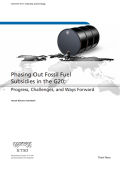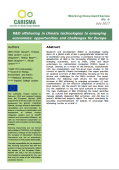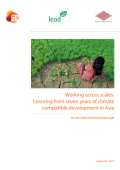
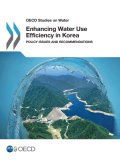
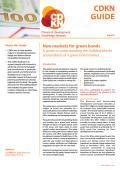
This guide has been developed in response to the interest of developing markets in the potential for capital markets to connect institutional private capital with projects that deliver positive environmental impact. Green bonds are a vehicle for doing this. The guide has been written for those with responsibility and interest in achieving environmental goals and commitments, in particular green growth and infrastructure development. It may be particularly useful for environment, finance and planning ministries and related teams in regions and cities.
The guide draws on learning from CDKN’s project to assess the potential for a successful green bond market in Colombia, and its broader climate finance work in other developing and emerging markets.
